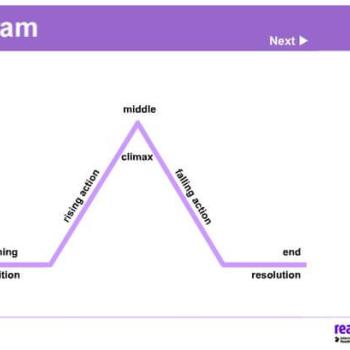Organizing & Summarizing
Plot Diagram

Grades
1 - 12
About this Interactive
Overview
The Plot Diagram is an organizational tool focusing on a pyramid or triangular shape, which is used to map the events in a story. This mapping of plot structure allows readers and writers to visualize the key features of stories.
The basic triangle-shaped plot structure, representing the beginning, middle, and end of a story, was described by Aristotle. Gustav Freytag modified Aristotle's system by adding a rising action and a falling action to the structure. This interactive version of the graphic organizer supports both Aristotle's and Freytag's conceptualizations of plot structures.